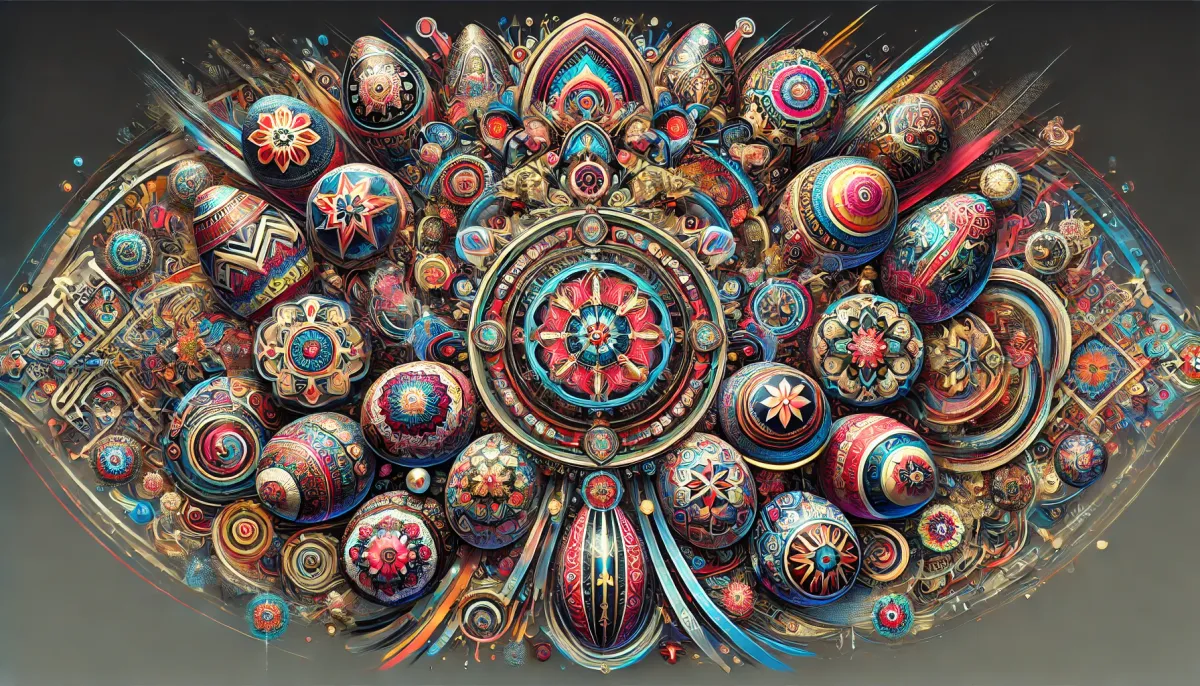Pysanka: Egg Decorating in Slavic Culture and Its Phygital Evolution
Explore the rich history and profound symbolism of intricately decorated eggs, their contemporary global impact, luxurious Fabergé masterpieces, beloved Easter customs, and the thrilling evolution of "phygital" collectibles. Discover how tradition thrives in the digital age.

Historical Roots and Symbolism
For centuries, the art of pysanka—elaborately decorated eggs—has held a central place in Slavic culture, particularly within Ukrainian tradition. Rooted in deep symbolism and ancient rites of spring, these ornately adorned eggs represent rebirth, renewal, and prosperity. The pysanka is not merely an object of beauty but a vessel of historical narratives, cultural identity, and esoteric symbolism, tracing back to pre-Christian times.
Historically, as detailed extensively in the Lubny Museum catalog from the late 19th century, pysanky (plural of pysanka) were intricately tied to the celebration of the Vernal Equinox and later Easter, symbolizing life's triumph over death and the awakening of nature. Early decorations depicted solar and geometric motifs, reflecting the egg’s mythological significance as a symbol of the universe's creation and renewal. Colors used in pysanky were also symbolic; red represented passion and life, black indicated eternity and the afterlife, white stood for purity, green symbolized nature and renewal, and yellow or gold denoted wealth and fertility.
Contemporary Traditions and Global Presence
In contemporary celebrations, the pysanka tradition persists robustly. Ukrainian diaspora communities worldwide, especially in Canada and the United States, maintain and promote this heritage. Notably, Canada hosts the world’s largest pysanka monument in Vegreville, Alberta, symbolizing cultural preservation and unity. Meanwhile, Ukraine's Pysanka Museum in Kolomyia celebrates and documents this rich heritage, housing thousands of eggs with unique patterns reflecting regional diversity.
Luxurious: Fabergé Eggs
Beyond pysanky, decorated eggs like the Fabergé eggs have showcased luxury, craft, and political symbolism. Created initially for the Russian Imperial family, Fabergé eggs epitomize opulence and intricate artistry, becoming prestigious collectibles in global art and luxury markets. These eggs were often elaborately adorned with precious metals, gemstones, and complex mechanical surprises, reflecting their status and the artistic ingenuity of their creators.
Egg-related Customs and Games
Egg-related customs also span practical yet symbolic traditions, such as egg tapping—a popular Easter game symbolizing resurrection and victory. Participants tap their eggs against each other, aiming to crack their opponent's egg while preserving their own intact. Eggs, being gifted, exchanged, or shared, strengthen community bonds and familial ties, thus holding significant cultural importance.
The Phygital Evolution
In the age of digital transformation, the tradition of egg gifting has evolved into a fascinating phygital phenomenon, combining physical craftsmanship with digital technology. Digital pysanky, accessible as NFTs (Non-Fungible Tokens) or virtual gifts, preserve traditional symbolism while engaging contemporary audiences. Artists and collectors alike use blockchain technology to ensure authenticity and provenance, expanding the cultural reach and significance of pysanky. Phygital pysanky bridge generations and geographies, creating innovative avenues for cultural storytelling, identity, and artistic expression.
Future Perspectives
The convergence of the ancient art of pysanka and modern digital innovation exemplifies the transformative potential of phygital collectibles. By embracing digital tools, communities ensure the enduring legacy of pysanky, celebrating its profound cultural significance and vibrant history in an interconnected world. This innovative evolution demonstrates how traditional practices can adapt and thrive in the digital age, fostering a renewed appreciation and broader global engagement with this unique cultural treasure.





